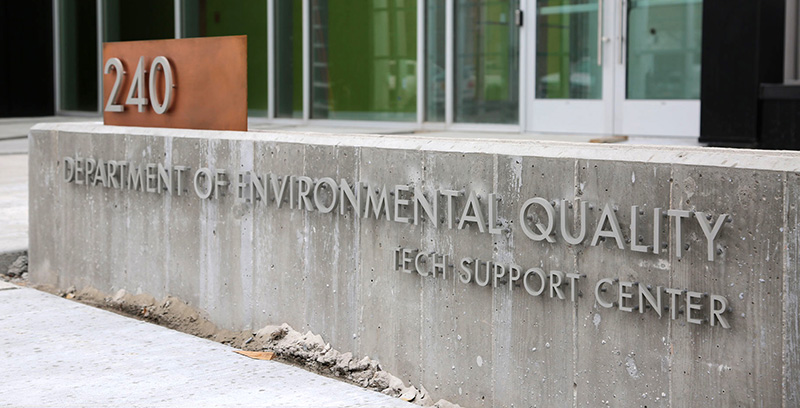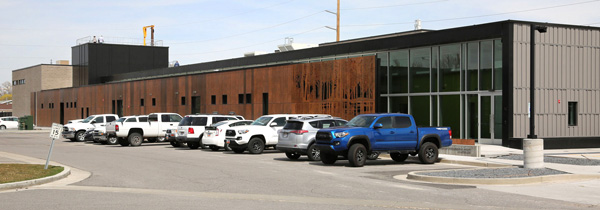
By Sidney Rogers

After years of work, deliberation, and complications, the Utah DEQ Technical Support Center is a reality.
The 21,500-square-foot building contains labs, storage for scientific equipment, and areas for sampling and analyzing work. But the benefits of the new facility reach beyond these state-of-the-art features.
The new structure is adjacent to the DEQ’s headquarters and replaces a building the department was leasing in West Valley City. Employees frequently need to travel between locations for various tasks, and the new facility is a mere 700 steps away. The proximity of the new Technical Support Center will cut down on unnecessary automobile travel, decrease tailpipe emissions, and, in turn, serve to better Utah’s air quality.

But convenience and cleaner air weren’t the only reasons for asking the legislature to fund the new building. Air monitoring equipment used to measure pollution levels is sensitive to vibrations, humidity, and temperature. So being stored in a shabby warehouse was not conducive to accurate air quality results.
Air Quality scientists will occupy half the building. Water Quality will occupy the other half to allow for water sampling. There will be warehouse space to build and repair monitoring stations as well as particulate and gas labs. And, perhaps most importantly, there is a ‘filter room,’ which stabilizes temperature, humidity, and vibration to ensure accurate air-quality filter analysis.
The new facility will enable the DEQ to better achieve its commitment to safeguarding Utah’s air, land, and water. And accomplishing this massive undertaking is something DEQ is proud of, especially considering how long it took to realize.
The original plan included the simultaneous construction of DEQ’s headquarters and the Technical Support Center. The construction of the Technical Support Center, however, was postponed for nearly a decade. Within that span of time, there was no shortage of trials. The first task was securing funding from the Utah State Legislature. The building board went before the legislature countless times with detailed proposals. Unfortunately, the project was found toward the bottom of the list of priorities each time.

Although it was DEQ’s highest priority to relocate to a more central and updated location, without legislative funds, scientists and engineers would have to make do. After years of failed attempts, the building board was considering scrapping plans for the new facility altogether.
But just before throwing in the towel, the Utah Division of Facilities Construction and Management encouraged the building board to apply once more in 2015. That fall, there was a meeting to predict what the legislature would do, and the results came back with the Technical Support Center in the top five funding priorities. Things were looking good, but the house and senate operations committee still had the final say.
During the 2016 legislative session, DEQ’s wishes were granted in the form of a $6 million appropriation for the construction of the Technical Support Center. After a quick celebration, the hard work started. The design process alone took months. By August 2016, it was time to find an architect capable of turning DEQ’s ideas into reality. Finally, after forming the perfect team of savvy architects and a skilled construction crew, ground was broken in 2017.
The DEQ is excited for the grand opening of the Technical Support Center on May 21. The scientists, staff, and engineers look forward to utilizing this facility to the greatest of its potential.
I recently graduated with a degree in communications from Weber State University. I enjoy sightseeing eating delicious food, and people who make me laugh to the point of tears.
